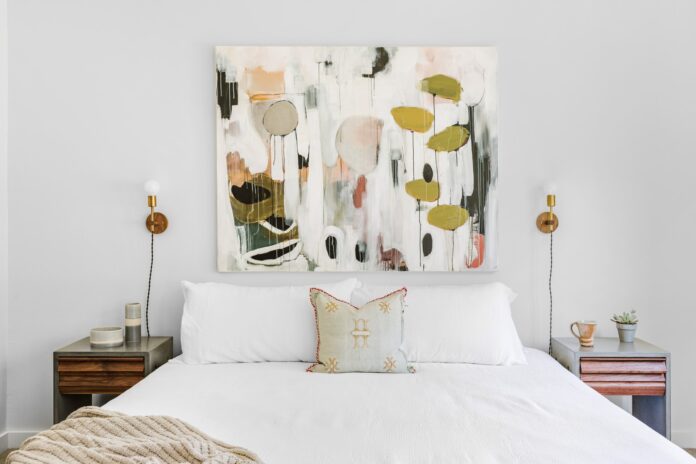As British homes embrace a return to thoughtful luxury, the allure of Italian design mastery has never been more pronounced.
The ‘Made in Italy’ movement, with its emphasis on exquisite craftsmanship and timeless sophistication, exists beyond fashion; it is also poised to dominate interior design in 2025, offering an antidote to the stark minimalism that has dominated recent years. This shift reflects a broader cultural movement away from disposable furnishings towards investment pieces that tell a story and improve with age.
Lounging As An Art Form: Italian Upholstery
At the heart of this resurgence lies a renewed appreciation for artisanal excellence. Take B&B Italia’s iconic Camaleonda sofa, reimagined for contemporary spaces. Its modular design, wrapped in butter-soft leather or sumptuous bouclé, embodies the versatility modern homes demand whilst paying homage to Italian artistry.
In London townhouses and countryside manors alike, these high-end furniture pieces are becoming the cornerstone of elegant living spaces. The revival of Flexform’s Groundpiece sofa, with its deep seats and architectural proportions, further demonstrates how Italian design seamlessly blends comfort with sophistication. Meanwhile, Minotti’s Connery collection, with its precise tailoring and innovative materials, offers a masterclass in contemporary luxury.






Natural Luxury: The Marble Revolution
The marble renaissance is another hallmark of Italian design’s influence, particularly as sustainability concerns drive interest in natural, enduring materials. Salvatori’s innovative use of stone in their bathroom collections demonstrates how traditional materials can be transformed into contemporary masterpieces.
Their Silk Georgette® limestone, with its gentle waves and subtle tonality, brings warmth to spaces that might otherwise feel clinical. The trend extends beyond bathrooms – Antolini’s dramatic book-matched marble slabs are being used as statement walls in entrance halls, while Margraf’s innovative thin marble panels are revolutionising kitchen splashbacks and furniture surfaces.

Illuminating Excellence: Italian Lighting Design
Lighting, too, has fallen under the spell of Italian craftsmanship. Flos’s arrangements of mouth-blown Murano glass pendants are illuminating drawing rooms across Britain, while Artemide’s architectural pieces blur the line between functional lighting and sculptural art.
The Tolomeo lamp, a staple in Italian homes, has found its way into British studies and reading nooks, its refined lines epitomising the marriage of form and function. Foscarini’s experimental approach, particularly their Twiggy floor lamp and Caboche collection, demonstrates how traditional Venetian glass-making techniques can be reimagined for contemporary spaces.
The Heart Of The Home: Dining In Style
In the dining room, Poltrona Frau’s masterful leather-wrapped tables paired with Cassina’s Cab chairs create an atmosphere of understated luxury. These pieces aren’t merely furniture; they’re investments in heritage, each bearing the marks of generations of Italian craftsmanship.


The trend for convivial dining has sparked renewed interest in Giorgetti’s (who opened their first UK store in West London in 2019) extended dining tables, whose innovative mechanisms transform from intimate four-seater to generous entertaining spaces. Riva 1920’s solid wood pieces, crafted from ancient kauri and briccola wood, bring environmental consciousness to luxury dining.
Cucina Moderna: The Italian Kitchen Revolution
The kitchen, long dominated by German efficiency, is witnessing an Italian revolution. Boffi’s handcrafted cabinetry, with its seamless integration of marble and brushed brass, offers a warmer approach to contemporary kitchen design. Their bespoke islands, particularly in rich walnut finishes, have become the heart of sophisticated homes.
Valcucine’s ergonomic innovations and sustainable materials are setting new standards for luxury kitchens, while Scavolini’s collaboration with diesel brings an industrial-chic aesthetic to traditional Italian craftsmanship. The integration of Gaggenau appliances within these Italian designs creates a perfect synthesis of German engineering and Italian style.
Living The Italian Way
As we move into 2025, the influence of Italian design extends beyond individual pieces to encompass an entire philosophy of living. It’s about creating spaces that feel both grand and intimate, where every element has been carefully considered and masterfully executed.
This approach is evident in the way Italian brands are approaching whole-room concepts: Edra’s unconventional seating arrangements encourage conversation, while Baxter’s leather innovations create environments that engage all the senses.
In an era where authenticity is increasingly precious, the enduring appeal of ‘Made in Italy’ lies in its unwavering commitment to excellence and its profound understanding of how we wish to live.
Sustainability & Heritage
Italian design’s emphasis on longevity and quality aligns perfectly with contemporary concerns about sustainability. Brands like Kartell are pioneering new recycled materials without compromising their distinctive aesthetic, while Moroso’s use of traditional craft techniques ensures their pieces can be repaired rather than replaced. This commitment to sustainability extends to production methods – many Italian manufacturers are investing in solar power and water recycling systems, ensuring their environmental impact matches their products’ longevity.
As we embrace this renaissance of Italian design, we’re not just following a trend – we’re participating in a centuries-old tradition of living beautifully. The investment in Italian pieces goes beyond the monetary; it’s an investment in craftsmanship that will be appreciated for generations.
The Bottom Line
The future of Italian design looks set to continue this trajectory of innovation grounded in tradition. As we see increased integration of smart technology and sustainable materials, Italian manufacturers are proving that luxury and responsibility can coexist.
The next wave of Italian design promises to be even more exciting, with brands like B&B Italia and Molteni&C already experimenting with biodegradable materials and modular designs that can adapt to changing living patterns. This constant evolution, always in dialogue with the past, ensures that Italian design will remain at the forefront of interior style for years to come.





